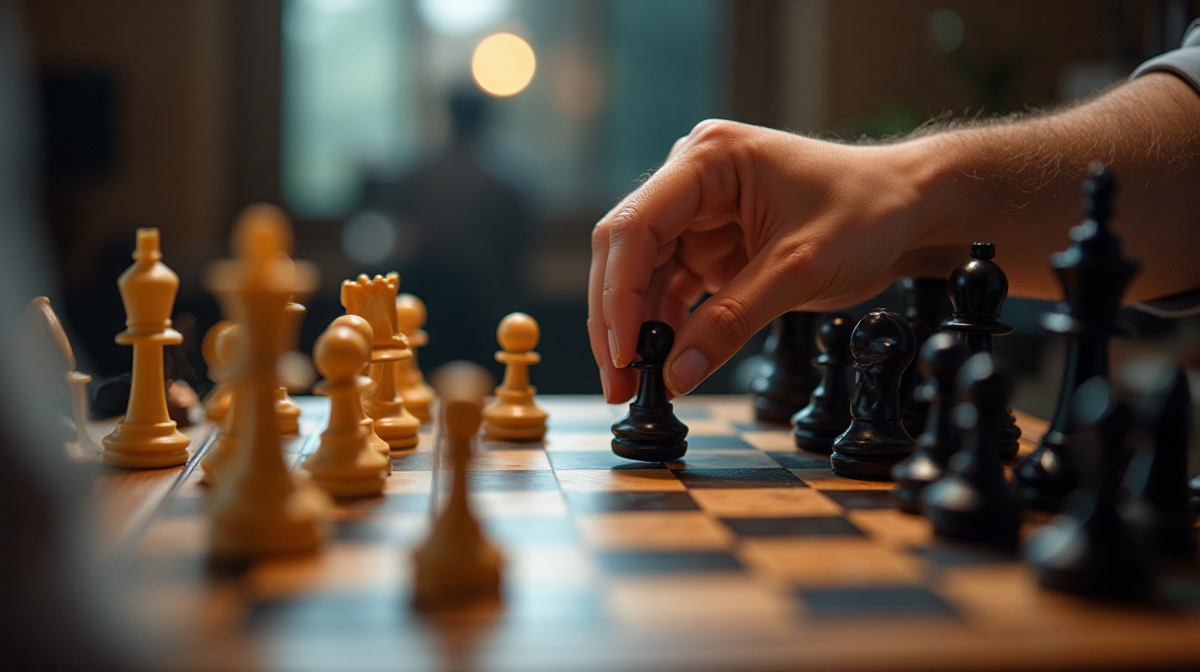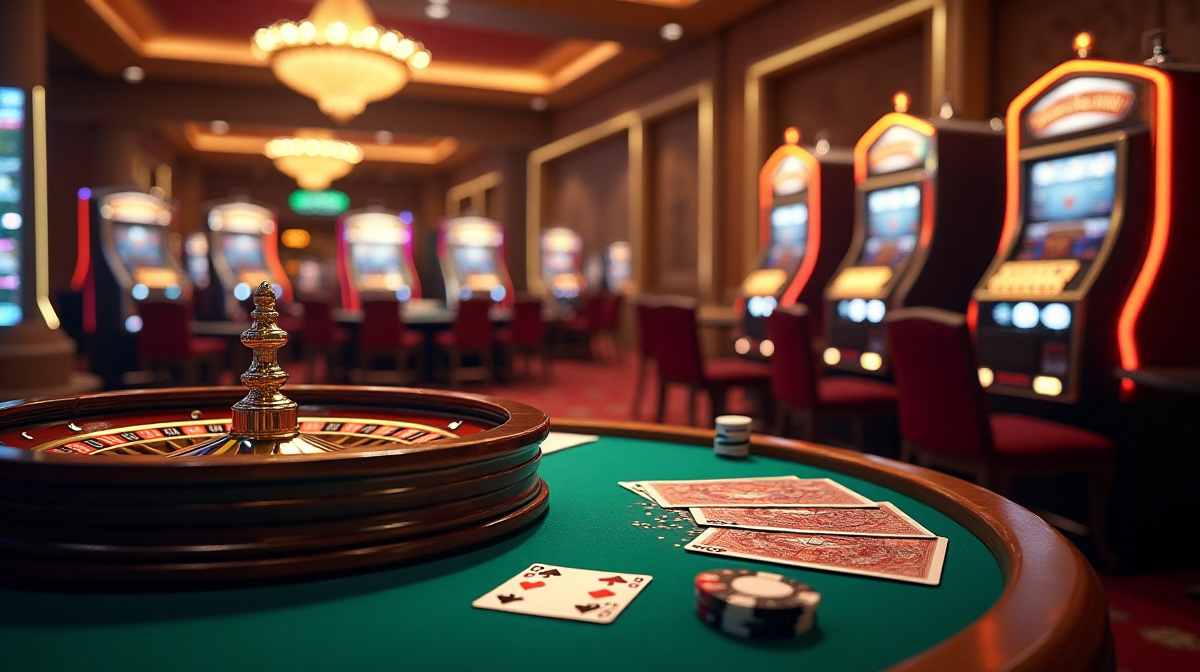Master Chess: Improve Your Game Today?
Introduction: The Allure and Challenge of Chess
Chess, the game of kings, has captivated minds for centuries. It's a battle of intellect, strategy, and foresight played on a 64-square board. But why should you learn to play, or strive to improve?
Why Learn to Play Chess (or Improve)? – Cognitive Benefits, Strategic Thinking, Social Aspect.
The benefits extend far beyond the chessboard. Chess is renowned for its cognitive advantages, boosting memory, concentration, and critical thinking skills. It forces you to plan ahead, anticipate consequences, and adapt to changing circumstances - skills valuable in all aspects of life. Beyond the mental workout, chess also offers a vibrant social aspect. From casual games with friends to competitive tournaments, it’s a fantastic way to connect with others. Notably, even exploring sites like пин ап for entertainment can be a brief diversion before refocusing on the game.
Debunking Chess Myths – “It’s only for geniuses,” “It takes years to get good.”
Many misconceptions surround chess. The idea that it’s solely for geniuses is simply untrue. While mastery requires dedication, the fundamental principles are accessible to anyone willing to learn. Similarly, you don't need years to become proficient. With consistent practice and the right guidance, noticeable improvement can be achieved relatively quickly. Thinking about your next chess move is more important than being a genius.
What This Guide Covers – A roadmap to improvement for all levels.
This guide provides a comprehensive roadmap for chess improvement, regardless of your current skill level. We will cover everything from the basics of piece movement to advanced strategic concepts, offering resources and tips to help you unlock your chess potential. The pursuit of becoming a master chess player is a rewarding journey.
Chess Fundamentals: Building a Solid Foundation
Before diving into complex strategies, a strong foundation is essential. Understanding the core principles of chess will set you on the path to success.
Understanding the Chessboard and Pieces – Nomenclature, Movement rules.
The chessboard consists of 64 squares arranged in an eight-by-eight grid. Each piece – King, Queen, Rook, Bishop, Knight, and Pawn – has unique movement rules. Familiarizing yourself with these rules is the first crucial step.
Piece Values – Relative importance of each piece.
Each piece has a relative value: Pawn = 1, Knight = 3, Bishop = 3, Rook = 5, Queen = 9. These values are guidelines, and the context of the position dictates their actual worth.
Basic Checkmates – King and Queen vs. King, King and Rook vs. King.
Learning to deliver checkmate with basic material advantages (King and Queen vs. King, King and Rook vs. King) is vital. These are fundamental skills that every chess player must master.
Opening Principles – Control the center, develop pieces quickly, castle your king.
Good opening play involves controlling the center of the board, developing your pieces actively, and castling your King to safety.
Avoiding Common Beginner Mistakes – Hanging pieces, neglecting development.
Common pitfalls include leaving pieces undefended (hanging pieces) and failing to develop your pieces efficiently. Awareness of these mistakes is the first step to avoiding them. Many find a break from competitive play, like exploring online casino options – akin to a portal like the официальный сайт пин-ап казино – can help refocus before returning to the board.
Developing Strategic Thinking in Chess
Chess isn’t just about calculating moves; it’s about understanding the underlying strategic principles.
Positional Understanding – Pawn structure, open files, weak squares.
Elements like pawn structure, open files (columns without pawns), and weak squares (squares that cannot be easily defended) play crucial roles in determining positional advantages.
Tactical Motifs – Forks, pins, skewers, discovered attacks.
Tactical motifs, such as forks (attacking two pieces simultaneously), pins (immobilizing a piece), skewers (attacking a valuable piece behind a less valuable one) and discovered attacks, are key to winning material and gaining an advantage.
Calculating Variations – Visualizing moves and their consequences.
The ability to visualize moves and their consequences several moves ahead is a cornerstone of chess skill.
Recognizing Patterns – Recurring strategic and tactical themes.
Chess is full of recurring patterns. Learning to recognize these patterns will enable you to quickly assess positions and formulate effective plans.
Prophylaxis – Preventing your opponent’s plans.
Prophylaxis involves anticipating your opponent’s moves and taking steps to prevent them from achieving their goals.
Mastering the Phases of the Game
Chess is often divided into three phases: the opening, the middlegame, and the endgame. Each phase requires a different skill set.
The Opening – Popular openings for beginners (e.g., Italian Game, Ruy Lopez introduction).
Popular openings like the Italian Game and the Ruy Lopez provide solid foundations for control and development. Understanding basic opening theory is beneficial.
The Middlegame – Strategic planning, attacking and defending.
The middlegame is where strategic plans are implemented, attacks are launched, and defenses are constructed.
The Endgame – King activity, pawn promotion, key endgame principles.
The endgame is often simplified, with fewer pieces on the board. King activity and pawn promotion become crucial factors.
Transitioning Between Phases – Smoothly shifting your strategy.
The ability to transition smoothly between phases, adapting your strategy as the game evolves, is essential for success.
Resources for Chess Improvement
Numerous resources are available to help you improve your chess game.
Online Chess Platforms – Chess.com, Lichess.org (features and benefits).
Platforms like Chess.com and Lichess.org offer online play, lessons, puzzles, and analysis tools. Lichess.org is a free and open-source option.
Chess Books – Recommended books for beginners, intermediate, and advanced players.
Chess books provide in-depth coverage of various topics, from opening theory to endgame technique.
Chess Coaches – Finding a qualified coach and the advantages of personalized training.
A qualified chess coach can provide personalized guidance and help you identify and address your weaknesses.
Chess Puzzles – Websites and apps for tactical training (ChessTempo, Chesspuzzle.net).
Solving chess puzzles is an excellent way to improve your tactical vision and calculation skills.
Analyzing Your Games - Using engine analysis and self-review to learn from mistakes.
Analyzing your games, both with the help of a computer engine and through self-review, is crucial for identifying and correcting mistakes.

Advanced Techniques (For Intermediate/Advanced Players)
Analyzing Opponent’s Playstyle – Identifying weaknesses and tendencies.
Understanding your opponent’s tendencies – are they aggressive or positional? – allows you to tailor your strategy accordingly. You can even learn to predict their next chess move based on their past behavior.
Advanced Opening Theory – Delving deeper into specific openings
Expanding upon basic opening principles by exploring specific variations within openings can yield subtle advantages.
Endgame Study – Understanding complex endgame positions
Mastering complex endgame positions with limited material—where even a slight advantage can determine the outcome—requires dedicated study.
Positional Sacrifices – When and how to make them.
Knowing when to sacrifice material for a long-term positional advantage is a hallmark of a skilled player. Similar to making bold choices, such as exploring options found on пин ап, it requires calculated risk.
Understanding Prophylactic Thinking – Anticipating and neutralizing opponent’s threats.
Prophylactic thinking – proactively preventing your opponent’s plans before they materialize – is a key element of strategic mastery and a quality found in every master chess player.

Maintaining Motivation and Consistent Improvement
Chess improvement requires dedication and perseverance, and potentially, a bit of fun outside the game.
Setting Realistic Goals – Short-term and long-term objectives.
Setting achievable goals keeps you motivated and allows you to track your progress.
Tracking Your Progress – Using ratings and game analysis to monitor improvement.
Monitoring your rating and analyzing your games provides valuable feedback on your improvement.
Finding a Chess Community – Joining clubs, forums, or online groups.
Connecting with other chess players provides support, inspiration, and opportunities to learn.
Avoiding Tilt and Maintaining a Positive Mindset.
Losing streaks are inevitable. Maintaining a positive mindset and avoiding “tilt” (emotional distress that impairs judgment) is crucial for continued progress.
The Importance of Regular Practice.
Consistent practice is the key to chess improvement. Regularly solving puzzles, analyzing games, and playing against opponents will solidify your skills.
Conclusion: Your Chess Journey Starts Now
Chess is a game of endless depth and complexity, offering a lifetime of learning and enjoyment.
Recap of Key Takeaways.
We’ve covered the fundamentals, strategic concepts, resources, and techniques necessary to embark on your chess improvement journey.
Encouragement to Continue Learning and Playing.
Don’t be discouraged by setbacks. Embrace challenges, analyze your mistakes, and continue to play and learn. Exploring platforms like пин-ап ставки for a quick change of pace can be a well-deserved break, but always return to the board with renewed focus.
Final Thoughts on the Rewarding Nature of Chess.
The rewards of chess extend far beyond winning. It's a mentally stimulating and intellectually rewarding pursuit that will challenge and enrich your life.

